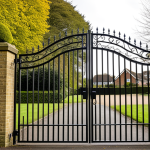As you navigate through the bustle of daily life, engagement with physical activities and sports may often take a backseat. Yet, it is essential to remember that staying active is not merely a routine, but a doorway to a plethora of benefits. Notably, it becomes increasingly enriching when experienced across multiple generations. From promoting health to fostering social bonds, multi-generational participation in sports and physical activities presents numerous advantages. Let’s delve deeper into this subject.
Harnessing the Power of Physical Activity for Health
Physical activity is no longer viewed as a mere means of maintaining a fit physique. Instead, it is now appreciated as an integral part of comprehensive health management.
Have you seen this : Can Mindfulness and Meditation Apps Provide Effective Stress Relief and Mental Health Support?
Exercise is a free medicine, accessible to all, irrespective of age or fitness levels. A study published in the American Journal of Preventive Medicine reports a direct correlation between physical activity and health outcomes, across all age groups[^1^].
The benefits of regular physical activity are numerous. It reduces the risk of chronic diseases, improves mental health, and promotes better sleep[^2^]. The World Health Organization (WHO) also supports these findings, stating that regular physical activity can prevent and help manage heart disease, stroke, diabetes, and several types of cancer[^3^].
This might interest you : How Do Community Kitchens Influence Nutritional Health and Social Cohesion?
Participation in multi-generational sports and activities magnifies these benefits. It encourages all family members, from children to their grandparents, to adopt an active lifestyle, thereby creating a positive, health-focused environment.
[^1^]: Biddle, S. J., & Asare, M. (2011). Physical activity and mental health in children and adolescents: a review of reviews. British Journal of Sports Medicine, 45(11), 886-895. doi:10.1136/bjsports-2011-090185
[^2^]: Brand, S., Beck, J., Gerber, M., Hatzinger, M., & Holsboer-Trachsler, E. (2013). Evidence of favorable sleep-EEG patterns in adolescent male vigorous football players compared to controls. The World Journal of Biological Psychiatry, 14(6), 410-421. doi:10.3109/15622975.2011.600295
[^3^]: World Health Organization. (2010). Global recommendations on physical activity for health. Geneva: World Health Organization.
The Positive Effects of Sports on Children and Adolescents
Sports play a vital role in the development of children and adolescents, boosting their health and instilling valuable life skills.
Engaging in sports helps children maintain a healthy weight, build strong bones and muscles, and enhance their fitness[^4^]. Moreover, a study in the Journal of School Health reported that school-based physical activity improves academic performance[^5^].
Furthermore, sports participation fosters positive social interactions and enhances children’s self-esteem and confidence[^6^]. By playing sports with older generations, children can also learn about teamwork, respect, and resilience, all while forging strong familial bonds.
[^4^]: Strong, W. B., Malina, R. M., Blimkie, C. J., Daniels, S. R., Dishman, R. K., Gutin, B., … & Trudeau, F. (2005). Evidence based physical activity for school-age youth. Journal of pediatrics, 146(6), 732-737.
[^5^]: Donnelly, J. E., & Lambourne, K. (2011). Classroom-based physical activity, cognition, and academic achievement. Preventive Medicine, 52, S36-S42.
[^6^]: Eime, R. M., Young, J. A., Harvey, J. T., Charity, M. J., & Payne, W. R. (2013). A systematic review of the psychological and social benefits of participation in sport for children and adolescents: informing development of a conceptual model of health through sport. International Journal of Behavioral Nutrition and Physical Activity, 10, 98.
The Role of Physical Activities in the Health of Older Generations
Physical activity and sports are not just for the young. They are equally important for older generations.
Regular exercise can mitigate the risk of developing a host of health problems prevalent among older adults, including osteoporosis, arthritis, heart disease, and diabetes[^7^]. A study published in The Journal of Gerontology found that regular physical activity can also improve the cognitive function of seniors[^8^].
Multi-generational sports offer older adults an opportunity to stay active in a fun and enjoyable way. It also provides them with a unique platform to share their experiences and knowledge with younger generations.
[^7^]: Chodzko-Zajko, W. J., Proctor, D. N., Fiatarone Singh, M. A., Minson, C. T., Nigg, C. R., Salem, G. J., & Skinner, J. S. (2009). American College of Sports Medicine position stand. Exercise and physical activity for older adults. Medicine & Science in Sports & Exercise, 41(7), 1510-1530.
[^8^]: Weuve, J., Kang, J. H., Manson, J. E., Breteler, M. M., Ware, J. H., & Grodstein, F. (2004). Physical activity, including walking, and cognitive function in older women. The Journal of the American Medical Association, 292(12), 1454-1461.
The Social and Psychological Benefits of Multi-Generational Sports Participation
Sports and physical activities serve as more than just a means of achieving and maintaining good health. They are also significant contributors to social and psychological well-being.
Participation in sports can foster a sense of belonging and community. It creates opportunities for social interaction, reduces feelings of isolation, and strengthens social networks[^9^]. Similarly, physical activity has been linked to improved mental health, enhanced self-esteem, and reduced symptoms of depression and anxiety[^10^].
When these activities involve different generations, they create unique opportunities for shared experiences and intergenerational learning. They bridge the age gap, fostering mutual respect and understanding, and strengthening familial bonds.
[^9^]: Eime, R., Harvey, J., & Payne, W. (2010). Social capital and sports participation: Complexities in mixing general population and sports member samples. Leisure, 34(4), 395-409.
[^10^]: Reiner, M., Niermann, C., Jekauc, D., & Woll, A. (2013). Long-term health benefits of physical activity–a systematic review of longitudinal studies. BMC Public Health, 13, 813.
Enhancing Family Bonds through Multi-generational Sports Participation
Multi-generational participation in sports and physical activities is not only beneficial for health but is also influential in strengthening family bonds. The family unit, with its spectrum of different generations, is the ideal setting to foster both physical activity and social interaction.
Engaging in sports together allows family members to spend quality time with each other, away from digital distractions and the stress of daily life[^11^]. It encourages communication, cooperation, and mutual support. Family members, especially children, can learn from the experiences and expertise of older generations. This interaction enhances mutual respect and understanding, thereby strengthening family relationships.
In addition to the immediate family, extended family members and friends can also join these activities. This expansion further enriches the social aspect of these activities, promoting a sense of belonging and community.
Moreover, participation in sports can also be a stepping stone to greater community engagement. Families can participate in community sports events or organize their own. These events can foster a sense of community, promote positive social interaction, and encourage physical activity among all community members.
[^11^]: Dunton, G. F., Liao, Y., Almanza, E., Jerrett, M., Spruijt-Metz, D., Pentz, M. A., & Chou, C. P. (2012). Joint physical activity and sedentary behavior in parent-child pairs. Medicine & Science in Sports & Exercise, 44(8), 1473-1480.
Conclusion: The Multifaceted Benefits of Multi-generational Sports Participation
In conclusion, multi-generational participation in sports and physical activities offers numerous benefits across all age groups, making it a worthwhile endeavor for individuals and families alike. These benefits span across physical, mental, and social domains, illustrating the comprehensive nature of their impact.
Regular physical activity can improve health outcomes, reducing the risk of various chronic diseases and promoting overall well-being. It can also enhance cognitive function, especially among older adults, and positively impact the academic performance of children and adolescents.
Psychologically, participation in sports can boost self-esteem, reduce symptoms of depression and anxiety, and foster positive social interactions. When these activities involve multiple generations, they provide unique opportunities for shared experiences and intergenerational learning, thereby bridging the age gap and strengthening family bonds.
Socially, multi-generational sports can foster a sense of belonging, reduce feelings of isolation, and strengthen social networks. They can also serve as a platform for greater community engagement, promoting physical activity and positive social interaction on a community level.
By highlighting these wide-ranging benefits, this article aims to encourage more families to engage in multi-generational sports and physical activities. After all, staying active is not just about personal health and fitness. It is also about fostering social bonds, nurturing mental health, and promoting a sense of community – and what better way to achieve this than through sports and physical activities enjoyed together by all generations.











